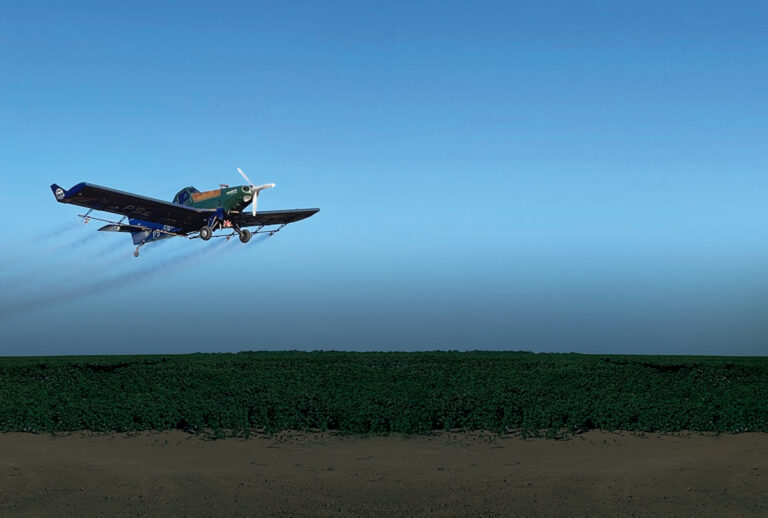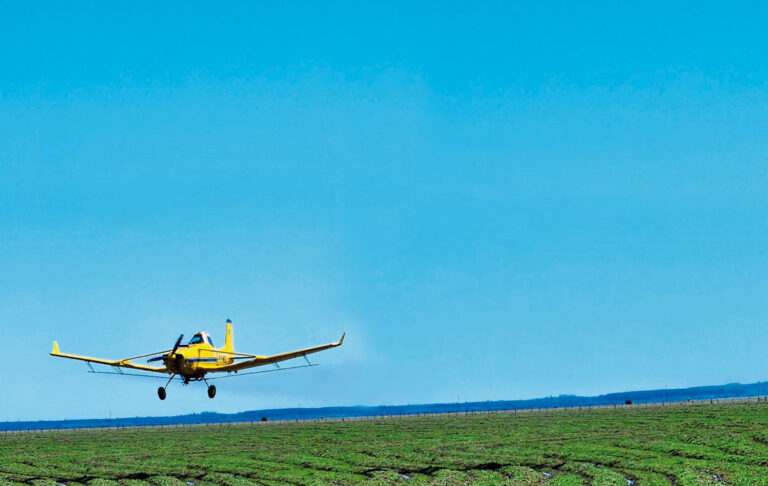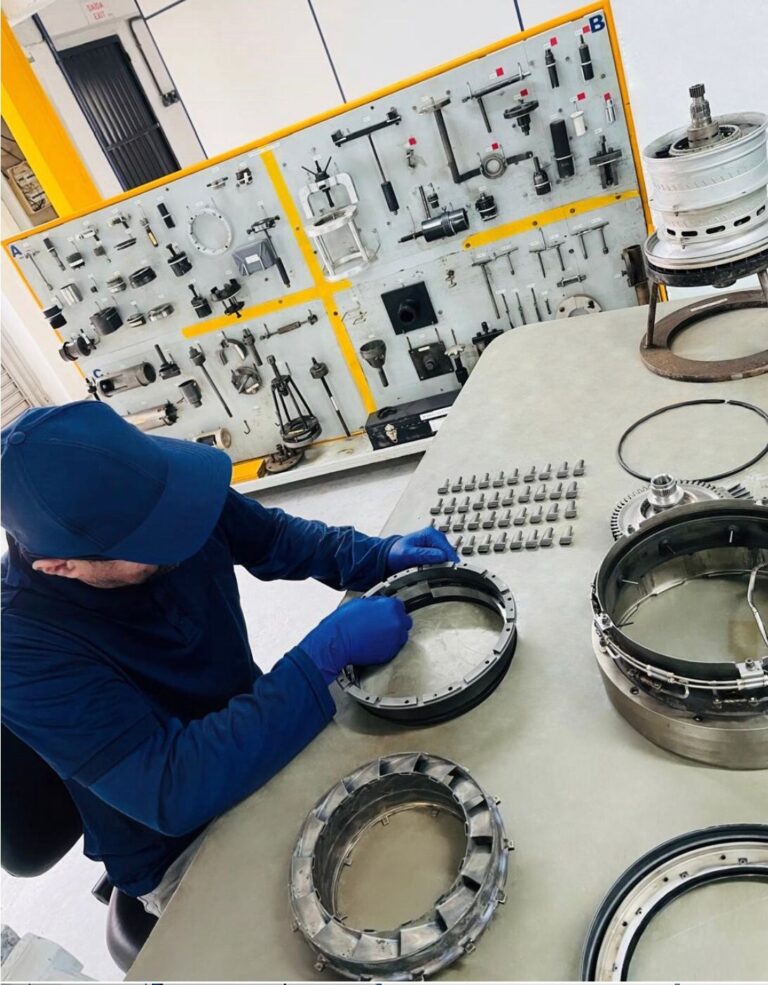Artificial Intelligence (AI) reached the agro business, promising an sustainable use of resources, as well as raising productivity in the fields. It is a mistake to think that Brazilian agriculture is late in comparison to other economical sections. Technology is already being used in the administrative and operational management, including in plantations to control diseases and plagues. But specialists advise: there’s still a lot of work. “There are demands in research, there are demands for investment, because to apply AI you need qualified data”, points out Paulo Estevão Cruvinel, a researcher of the Brazilian Agricultural Research Company (EMBRAPA, in portuguese).
It is in his research unit, located in São Carlos/ São Paulo, known as the National Capital of Technology, that an innovation project is being prepared for the sector of agricultural aviation. The focus is to implement higher quality in the defensive’s application. Crunivel says that this work is a continuation of a search produced by EMBRAPA and SINDAG (National Agricultural Aviation Union), and has the purpose of promoting the best adjustment in on-board sprayers for crop pest control supported by AI.
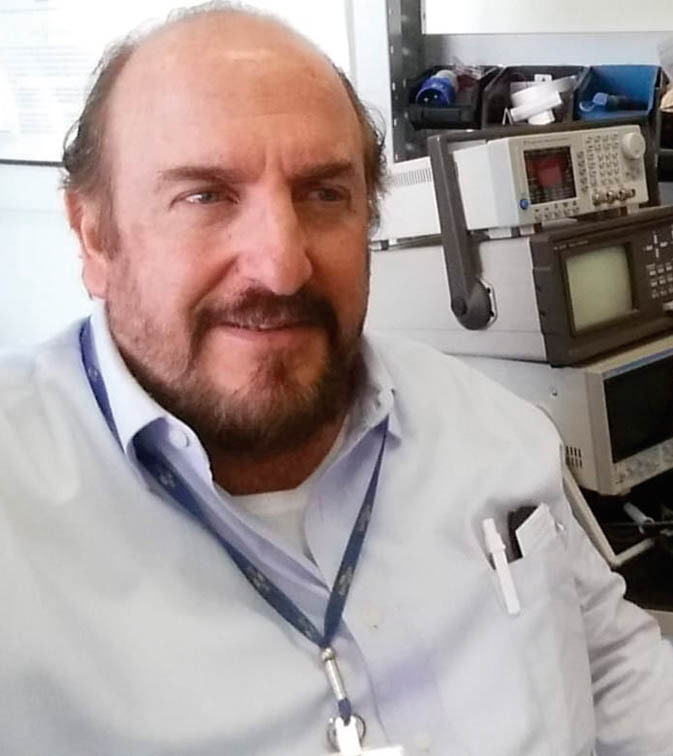
Photo: Disclosure
QUALITY IMPROVEMENT
“Objectively, what we have been focusing on is quality improvement in the monitoring and selection process of tools and equipment, as well as the demands for aircraft maintenance and onboard equipment,” notes the researcher who has been dedicated to the study and development of sensors, intelligent systems, and automation in agriculture. This is work that can be better structured with the use of AI tools to assist aerial processes. As is already the case in property management, AI tools will aid in decision-making by selecting the best equipment and inputs for a particular application.
Cruvinel warns that, initially, AI in aerial agricultural activities will not have full control. In other words, it will not make entirely automatic decisions. It is still a supervised process. “However, depending on team structuring, partnerships, and strategic alliances, it may evolve towards total control,” says the researcher.
He mentions that one of the projects he currently coordinates at Embrapa involves cotton cultivation, where the entire decision-making model for crop management is based on the use of AI. However, this requires data management on soil, plants, climate, and inputs, involving concepts of Big Data (volume, velocity, variety, value, and veracity) and Data Analytics – the process of inspecting, cleaning, transforming, and modeling data to discover useful information – to work with the statistics of this information. This will allow AI to indicate, for example, the appropriate amount of water to be used in the crop or the product to control a specific pest, and so on. “Then you use this intelligent system to make the best decision,” highlights Cruvinel.
KEYWORD
Although, for the Artificial Intelligence to work, besides filling the system with trustworthy and qualified information, there’s the need for systems that can be constantly actualized, as the database for models of decision making. “The metrology is a keyword”, explains the Embrapa Instrumentation Researcher, Paulo Cruvinel. For instance, when applying a certain chemical or biological product to control an invasive plant, the AgAv applicators need to access information about which plant they need to control digitally, as which is the recommended dose to be applied and the potential risks of drift in the targeted area.
Cruvinel explains that it will always be necessary to work with trustable data that will be used by classifying specialists, that means, math and computational models trained to and embraced with adequate technologies ( evolving electronics, electromechanics and smart computational systems). With the series of seasonal data, one can apply the methods that will aid the decision making process in a more robust way. “I mean, you can actually make a decision based upon qualified information”, mentions the researcher.
ENVIRONMENTAL VARIABLE CONTROL IS THE MAJOR CHALLENGE IN THE FIELD
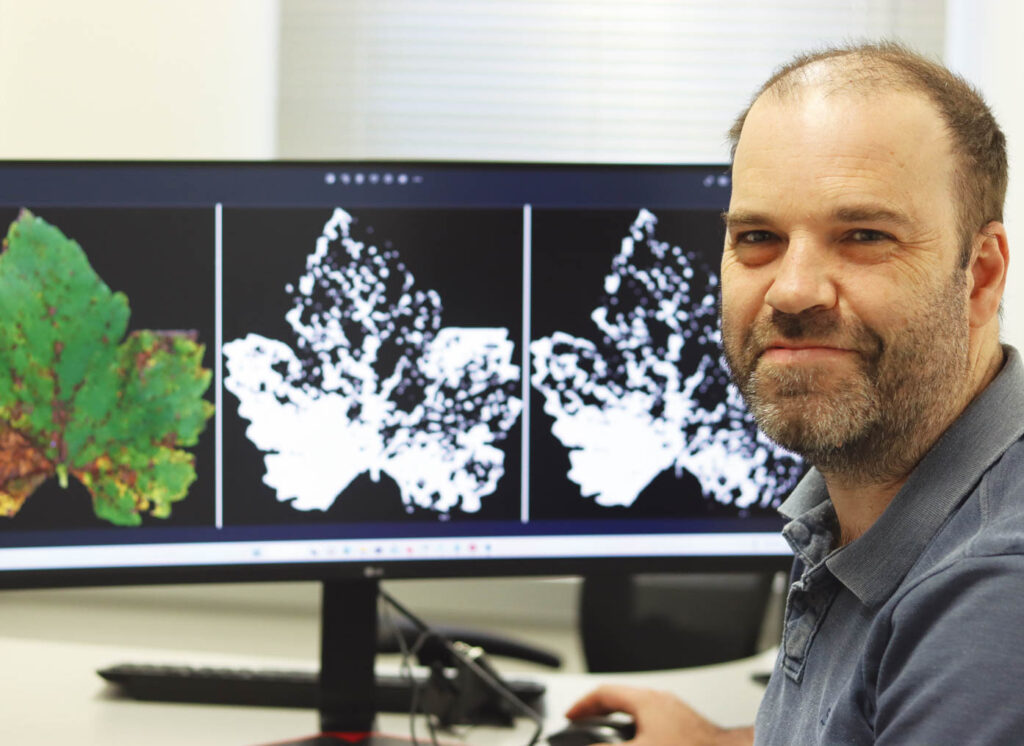
Jayme Barbedo, a researcher at Agricultura Digital ( original name of the Company), points out that Brazil is actually at the forefront of applying Artificial Intelligence (AI). However, although machines within this concept are already operating in the field, there is still much hard work to be done to ensure that the tool provides greater benefits to farmers and society. One of the major challenges is directly related to the nature of the activity, which takes place in open-air environments where there is no control over environmental variables.
“So you have interference from weather conditions, lighting, temperature, factors that are difficult to communicate to the machine, causing a certain delay in the development of technologies that truly work in the field and bring benefits to farmers,” emphasizes the researcher. He believes that more study is still needed to overcome this obstacle. However, he points out that there are already some AI technologies operating in the field, such as automatic weed detection.
In this point, Barbedo mentions that there are already several machines from different manufacturers on the market. The pest elimination process can be carried out using herbicides applied by various aerial and ground equipment, or through mechanical processes. He mentions that one of the existing machines on the market has a rod that pushes and kills the plant without the need for product application.
NEURAL WAVES
The research agenda at Embrapa in the field of AI is extensive. One of them has been under development for ten years in partnership with Macnica DHW – the largest semiconductor distributor in Japan and the 5th largest in the world. The work aims to detect potential diseases in crops at an early stage using a tool that simulates brain waves. This enhances decision-making efficiency, consequently reducing losses in agricultural enterprises and rationalizing the use of natural resources.
However, as in other cases of AI usage, algorithms need to be trained to recognize healthy and diseased plants. This requires generating a large number of images and having an expert determine whether the plant is healthy or diseased. “It is a very extensive, expensive, and tiring task,” points out Barbedo. The good news is that BrainTech has been developed by InnerEye, an Israeli technology company focused on the applicability of AI, which allows for the acceleration of this labeling process.
The BrainTech technology originated from an Israeli university, where tests were conducted with different objects. The first practical application of the technology was at London’s Heathrow Airport, where it is used for baggage inspection and detecting prohibited objects such as knives, weapons, and explosives. Since this technology can be applied to virtually any image classification problem, InnerEye approached Embrapa Digital Agriculture, and the use of the technology in plant pathology appeared to be the most interesting at that time.
The system enables the capture of neural signals from experts through a helmet with electrodes, similar to an electroencephalogram (EEG), and it started testing in Brazil in 2022. Embrapa researchers are training the AI to recognize these brain waves. When the machine becomes capable of this recognition, it can present three to ten images per second to the plant pathologist. The brain doesn’t even need to think, as the device can detect the stimulus and classify the image. “So instead of making dozens or hundreds of annotations in an hour, you can make thousands of annotations in an hour. That is the great advantage of this technology,” emphasizes Barbedo.
Artificial Intelligence brings a world of possibilities. At Embrapa, there are several projects that are yet to start, focusing on early disease detection. On the agenda is the identification of nutritional deficiencies through AI. According to Jayme Barbedo, a researcher at Embrapa Digital Agriculture, this work would be carried out using hyperspectral cameras installed on drones, flying over the fields to detect the problem.
Barbedo highlights that this is every farmer’s dream: to have early information about what is happening in the field to take necessary actions. “The earlier they act, the less product they will have to apply, and the less damage to both themselves and the environment,” notes the researcher.
EMBRAPA AND FAPESP INAUGURATES A CENTER FOR SMALL AND MID SIZE RURAL FARMERS

Photo: Governo do Estado de São Paulo
So, who’s going to have this technology? Jayme Barbedo, researcher of Embrapa’s Digital Agriculture, reminds that Digital Intelligence has the potential to diminish and increase the differences between the big and the small producer. It will all depend on how much of it will be accessible. That way, thinking on small and medium farmers, Embrapa, that is linked to Agricultural, Cattle Breeding and Supply Ministry (MAPA, in Portuguese), and the the São Paulo State Research Support Foundation (Fapesp, in Portuguese), inaugurated in April 11th the Scientific Center for Development in Digital Agriculture (CCD-AD/SemeAr).
The project will be in the coordination of Embrapa’s Digital Agriculture, located in Campinas/São Paulo, and has the focus of technology generation from accessible intelligence, to small and mid size farms. “There are lots of companies nowadays that don’t even charge the producer for this tech. They charge big companies that have some interest in embracing their one machinery or include in their portfolios that tool” says Barbedo.
IN THE ERA OF BIG DATA, AN ARSENAL OF INPUTS FOR AI

“The tools of precision agriculture and digital agriculture generate a large volume of data and information about agricultural areas and operations. The big challenge is to use this data correctly to support decision-making in rural production.” This statement by the President of the Brazilian Commission of Precision Agriculture and Digital Agriculture (CBAPD/Mapa) and Vice Scientific Director of the Brazilian Association of Precision Agriculture and Digital Agriculture (AsBraAP), Christian Bredemeier, highlights the role of Artificial Intelligence (AI) in understanding trends from this large volume of information (big data), generating knowledge to support decision-making management.
Bredemeier, a university professor with a master’s degree in Crop Science from UFRGS and a doctoral degree in Plant Nutrition/Precision Agriculture from the Technical University of Munich – Weihenstephan (Freising, Germany), emphasizes that there have never been so many possibilities to have data, whether about crops or environmental/climatic conditions, which are fundamental for excellent aerial agricultural operations. There is a wealth of information from satellite images, as well as data from drones, all of high quality.
“We are living in the era of data science,” notes Bredemeier. He points out that there are weather stations, machinery, equipment for applying agrochemicals and biological products, among other sensors, capable of generating a huge amount of data, which is very useful when it comes to aerial agricultural operations. By analyzing this vast flow of references, it is possible to make decisions, such as determining whether a particular product is suitable for a specific pest under specific conditions, and even whether it is the right time for application.
However, for this to be done correctly, machine learning is important, which involves training algorithms so that the machine can analyze the information and provide an accurate prognosis on whether a particular action is appropriate or not. “Of course, artificial intelligence depends on the quality of the information that people provide,” explains Bredemeier.
RESEARCHERS STUDY HOW TO IMPROVE MACHINE LEARNING PERFORMANCE
Projects focused on the increasingly efficient use of Artificial Intelligence (AI) are of interest to both machinery manufacturers and farmers, who seek more accurate decisions in crop management, as well as scholars in the field. It is an expanding market that does not escape the attention of academia. Dennis Grinwald, a scientist and researcher pursuing a doctorate in Artificial Intelligence at the Technical University of Berlin, Germany, points out that while the technology allows for numerous applications, there is still much room for improvement.
In fact, Grinwald, who holds a degree in aerospace engineering and a master’s degree in computer science, is working on research to enhance the technology. “Our group focuses on the theory of how to make Artificial Intelligence more efficient, train faster, and with less data,” explains the researcher. The study is being conducted at the Berlin Institute for the Foundations of Learning and Data (Bifold), which was established last year and is affiliated with the university. It brings together several research groups focused on AI, working with big data in various applications, including the healthcare field.

APRENDIZADO
The importance of this research lies in making the algorithm training process less costly since the foundation of AI lies in the information itself. The higher the quality of the data, the better the machine’s performance. This process is also considered costly, starting with the number of people involved – professionals to collect data, take photographs or videos. Then, professionals are needed to annotate these images, identifying what they represent for the machine to learn. If the quality of images and videos is high, it also requires greater memory capacity in the computing network.
Grinwald makes it clear that the architectural composition of AI, i.e., how neural networks are connected and the algorithms used to teach the machine, is not the focus of the research. The goal is machine learning. Comparing machine learning to that of a child, the researcher notes that there is even a joke that the machine is not intelligent. “You show a dog to a young child, and they will be able to identify all dogs, even breeds they may have never seen before. The machine cannot do that. It often needs to see everything before it can make the correct classification,” he points out. He emphasizes that it is in the field of machine learning that his group is working.
The “mini-project,” as Grinwald calls it, is funded by a company that has entered into a partnership with the university. Therefore, the tests are conducted at the experimental farm located next to the educational institution. As the study is sponsored, all data is private. The researcher mentions that in Germany, there is significant competition among organizations to see who will be the first to develop an autonomous application that can accurately detect and eliminate pests, which farmers can purchase and use immediately.



